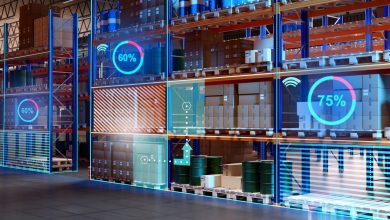
The evolution of broadband networks tells a fascinating story of continuous transformation. What began as simple data pathways has steadily evolved into a sophisticated infrastructure that enables everything from streaming entertainment to remote healthcare delivery. Today, we’re witnessing the next chapter: the emergence of what will become truly intelligent networks that adapt, learn, and optimize in real-time.
As someone who has observed this transformation from both the enterprise and consumer technology world and now within the broadband research community, we are moving beyond the era where speed was the primary differentiator. We are embarking on a new era of seamless experiences and networks that will adapt to the needs of users and devices in real-time—networks that will become context-aware and effectively invisible to users while delivering precisely what each interaction requires.
Beyond Reactive: The Predictive Network Era
Traditional networks operate reactively—responding to congestion after it occurs, addressing security threats after they’re detected, and scaling capacity only after demand peaks. AI-powered networks will flip this paradigm entirely.
These systems will continuously analyze vast datasets—traffic patterns, application behaviors, device characteristics, environmental factors, and user contexts—to predict and prevent issues before they manifest. Instead of reacting to bandwidth spikes during a Sunday night streaming surge or a local gaming tournament, the network will reallocate capacity and optimize routing before the first buffer wheel spins.
This predictive capability will extend beyond performance optimization. Intelligent networks will detect the early signatures of coordinated cyberattacks by recognizing subtle patterns across seemingly unrelated events—patterns that would be invisible to traditional rule-based security systems.
Perhaps most intriguingly, these networks will begin to understand the intent behind data flows, enabling them to make sophisticated decisions about routing, caching, and processing that align with application goals rather than simply moving packets from point A to point B.
Enabling Breakthrough Applications
When broadband networks evolve from pipes to intelligent platforms, they stop being just enablers of today’s internet and become catalysts for entirely new categories of applications. The implications will extend far beyond incremental improvements to existing services.
In public safety, intelligent broadband can stitch together real-time video feeds, environmental sensors, and geolocation data from across a city’s fixed infrastructure. AI can then analyze these streams holistically—identifying developing hazards like wildfires or chemical leaks minutes or even hours before conventional systems would raise the alarm.
Even in the energy sector, broadband networks will play a key role in enabling responsive smart grids. AI will optimize electricity distribution by predicting usage patterns in neighborhoods, rerouting capacity dynamically, and integrating distributed solar or battery storage—all through broadband-enabled coordination between homes, substations, and utilities.
For scientific research, these networks will enable “federated AI” experiments where machine learning models can train across distributed datasets without moving sensitive data, while the network itself optimizes the training process by predicting computational bottlenecks and automatically redistributing workloads. This could accelerate breakthroughs in everything from climate modeling to drug discovery.
Perhaps most exciting is the emergence of “anticipatory computing” scenarios where networks will pre-compute likely user needs based on context, behavior patterns, and environmental data. Imagine systems that will render virtual environments before you decide to enter them, preload medical imaging analysis before doctors request it, or compile code optimizations before developers finish writing their programs.
The Security Paradigm Shift
AI-powered broadband networks will pioneer a fundamentally different approach to cybersecurity—moving beyond perimeter defense to what security experts call “immune system networking.” Just as biological immune systems identify threats through pattern recognition rather than prior exposure, these networks will develop sophisticated threat detection capabilities through continuous learning.
The most advanced implementations will use adversarial AI techniques where the network continuously tests itself against simulated attacks, developing and refining defensive strategies in real-time. This will create networks that become more secure under pressure, learning from attack attempts to strengthen their defenses automatically.
Zero-trust principles will be embedded at the network infrastructure level, with every packet, every connection, and every data flow continuously verified through AI-driven authentication mechanisms. As we approach the post-quantum cryptography era, these networks are being designed to adapt their encryption methods dynamically, implementing new cryptographic standards without service interruption.
The Collaborative Intelligence Ecosystem
The development of these capabilities requires unprecedented collaboration across the entire technology ecosystem. Unlike previous network generations that could be developed in relative isolation, intelligent broadband networks demand coordination between fiber infrastructure providers, edge platform operators, AI researchers, security specialists, and application developers.
This collaboration extends to ensuring interoperability across diverse vendor ecosystems while maintaining the flexibility to incorporate breakthrough technologies as they emerge. The goal is to create platforms that can evolve continuously rather than requiring wholesale replacement every few years.
Standards development in this environment becomes complex, as it must account for AI systems that learn and adapt autonomously. Traditional specifications that define exact behaviors become insufficient when network components are designed to optimize their own performance through machine learning.
The Intelligence Horizon
Looking ahead, we’re working toward networks that will exhibit what AI researchers call “emergent intelligence”—capabilities that arise from the complex interactions between network components rather than being explicitly programmed. These systems will demonstrate behaviors and solve problems that their original designers never anticipated.
The network architectures being developed today incorporate flexibility at every level, specifically to support unknown future applications. By building learning capabilities, adaptability, and intelligent response systems into the fundamental platform, we’re creating infrastructure that will evolve with technological progress rather than constrain it.
This approach also addresses broader technological challenges, including energy optimization, supply chain resilience, and privacy protection, through AI-driven solutions that automatically adapt to changing conditions.
The Transformation Imperative
We stand at an inflection point where network intelligence will become the foundation for the next wave of technological innovation. The applications we can imagine today—immersive computing, real-time AI collaboration, anticipatory digital services—represent just the beginning of what will become possible when networks themselves become intelligent partners in computation.
This evolution will unfold rapidly, with AI capabilities in broadband advancing at the pace of machine learning research rather than traditional infrastructure deployment cycles. The organizations and industries that understand and leverage these intelligent network capabilities will define the technological landscape for the next decade.
The future belongs not just to faster broadband, but to networks that think, learn, and evolve—networks that won’t just connect our digital world but will actively enhance it. The revolution in broadband intelligence has progressed from theoretical possibility to practical reality, and its full impact is only just beginning to emerge.
In this new paradigm, the question isn’t just how fast your broadband network can transmit data—it’s how intelligently it can participate in solving the complex challenges of our increasingly connected world. That’s the promise of AI-powered networks, and it’s a future that’s being built today.
About The Author Phil McKinney:
Phil McKinney is President and CEO of CableLabs. In this capacity he heads the research and development organization responsible for charting the cable industry’s technology and innovation roadmap.



